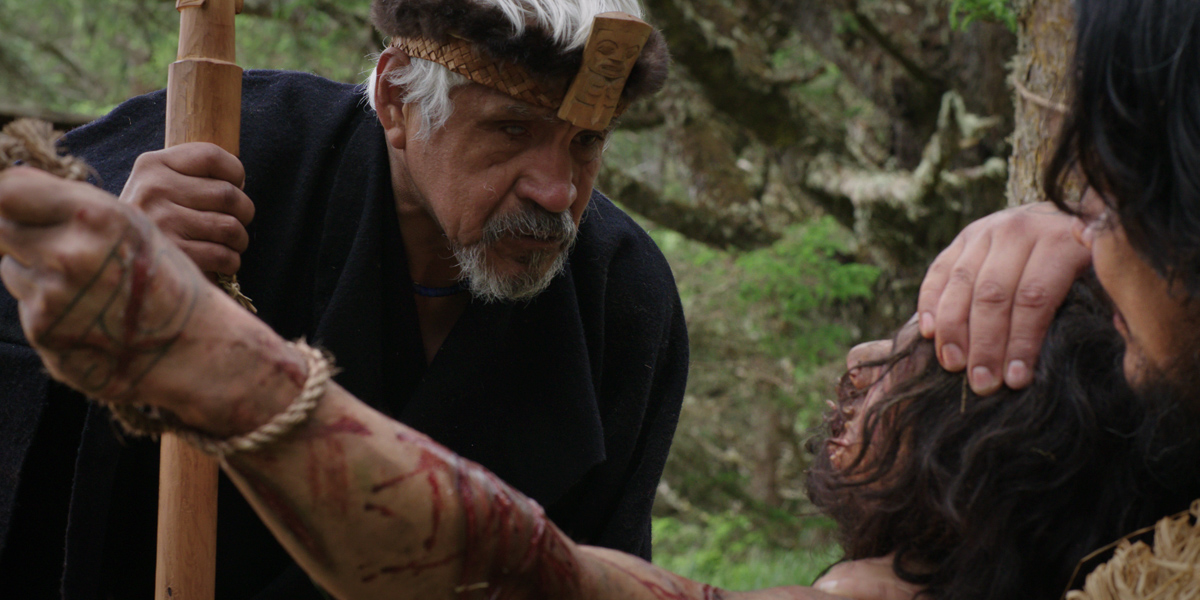Shining a light on an endangered language
TIFF has always been a home for and champion of Canadian cinema. In 2019, we wanted to do even more — so, as part of our Canada’s Top Ten series, several incredible Canadian films will receive a theatrical run at TIFF Bell Lightbox.
Sgaawaay K’uuna (Edge of the Knife), the first and only film to be made in the endangered Haida language, was named one of Canada’s Top Ten films from 2018 and will begin its theatrical run this April.
Producer Jonathan Frantz joined Geoff Macnaughton and Rob Kraszewski on TIFF Long Takes to discuss what it was like to make this fascinating film, and what he hopes the film will do for the Haida Nation and language.

How was it with casting the film and finding people who could speak the Haida language?
We knew that would be a big challenge coming into it. There are only 20-odd fluent Haida-language speakers left. Most of them are 65 or older, so we knew we weren’t going to get a cast that could speak the language fluently. We cast four native speakers in the film in the roles of elders.
Once we selected the leads, we started to go through this language immersion programme, where they were partnered with elders who could speak the language. We recorded all of the lines and made an app where the actors could go into it, read the line, hear it in English, and hear it in Haida. We gave them a little iPod so they could walk around and listen to their Haida lines for months before [shooting].
As people on-set were becoming more and more familiar with the language, is that also one of your hopes with this film, to ensure that audiences know that this language exists and don’t forget about it?
That was a big starting point of the project, and why the Haida Nation was so supportive. Their language is on the brink of extinction, and there are a lot of people trying to sustain it. This film is one more project that brings awareness, brings attention, brings some funding, and a structure to support language learners.
As a producer on the film, what did you bring to the project, and what was your relationship to it?
I started a production company that is owned by the Haida Nation. So they own the project, they own the rights to the film, and I am a contract producer working for the Haida Nation. At any point they could fire me or tell me to leave, so I don’t have that ownership or control.
I don’t have ultimate authority. I am one of a collective group of key creative people, and we make decisions collectively, harkening back to Isuma and the philosophy of collaboration and working together and following the traditional values of Inuit.
We have a group of people who are committed to a certain outcome, and the outcome is often not to get into TIFF or to get certain accolades. It’s to present the culture in a way that people feel it was authentic, to showcase language and to do the best we can collectively.
How was attention to detail an important part of the production?
We brought Zacharias Kunuk and Norman Cohen [of Isuma] to Haida Gwaii during early stages of pre-production, and they spent two weeks on the island, meeting people and travelling around. We spent around three days in a cabin talking with Gwaai [Edenshaw] and Helen [Haig-Brown, the directors], which was an opportunity for them to explain how they have approached Isuma videos. And one thing that Zach kept going back to was, “Listen to your elders. Have your elders involved in every aspect of the project and have them on-set, and do it right. Do it the way the elders would like it done.” That was a core aspect of everything we did.
What was the reaction to the film? Have the elders seen it?
We screened it first in the community. They were brought to tears hearing young people speak the language.
Listen to the full interview with Jonathan Frantz on TIFF Long Take’s 100th episode here.